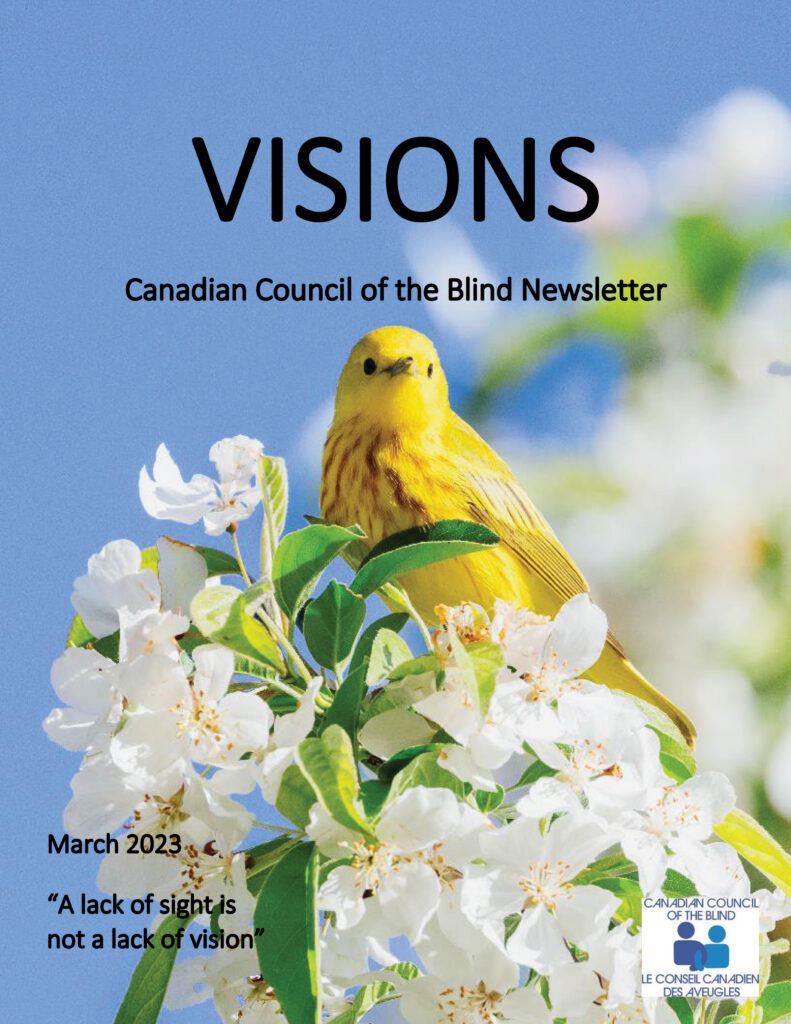
Luxturna Now Available Through OHIP
The Canadian Council of the Blind (CCB) applauds the Ontario Minister of Health’s announcement on Tuesday, February 28, 2023 that the Novartis treatment Luxturna® is now available through the Ontario public health plan for patients with vision loss due to inherited retinal dystrophy caused by confirmed biallelic RPE65mutations. Ontario has now joined Quebec, Alberta, and Saskatchewan for public coverage of the treatment. Nova Scotia has now confirmed funding for Luxturna through its Exception Drug Fund. Since the procedure is not performed in the Province, arranging care, is the next step for Nova Scotia’s only identified patient.
“The CCB fully endorses Minister of Health Sylvia Jones’ decision to fund Luxturna,” stated Dr. Keith Gordon, the CCB’s Senior Research Officer. “The funding of this innovative therapy provides hope that people living with the RPE65 gene mutation will be fully able to participate in life. We commend the Ontario government for making this possible.”

Robert Just Interview on Manitoba Morning
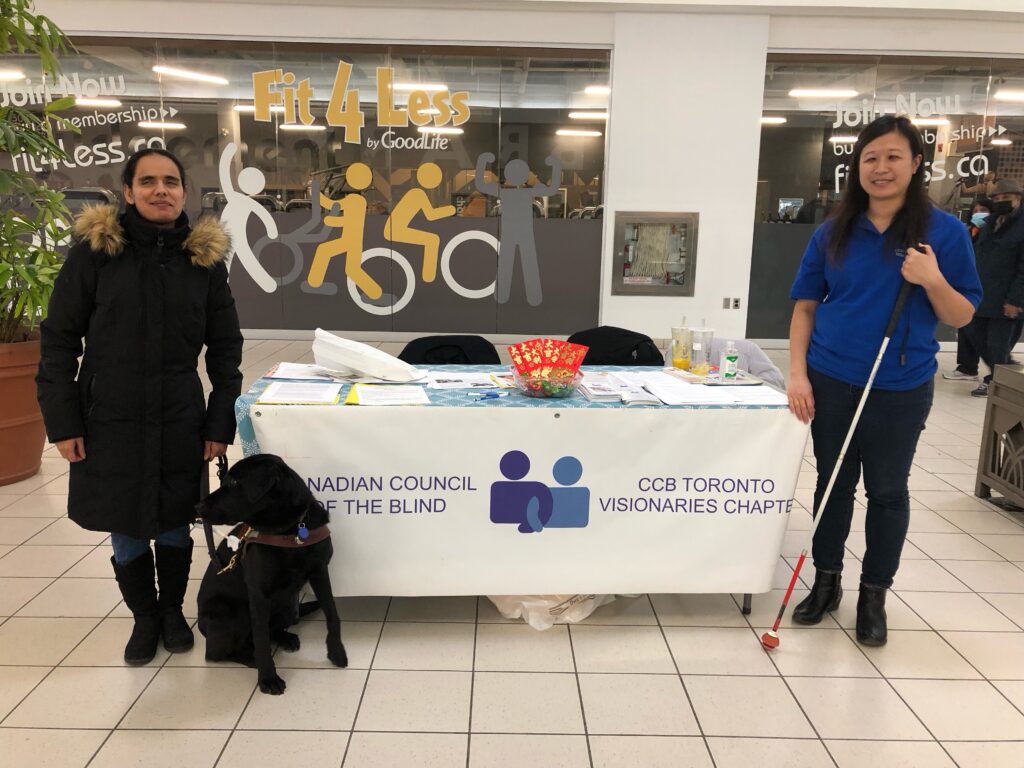
Robert Just from CCB Toronto Visionaries Chapter had the opportunity to be interviewed all about White Cane Week on Manitoba Morning. You can find their conversation below. It has been broken into to parts to make the download shorter.

White Cane Week Comes to a Close
It is with great honour that I wish to congratulate the many Chapters who took the opportunity of White Cane Week 2023, to celebrate their abilities. I have personally been involved with many different activities; but it is always gratifying to me to see the many powerful ways our grass root Chapters partake to truly identify what White Cane Week continues to stand for, a celebration of abilities that we should all be proud of.
Thank you to everyone for your contributions, as you continue to make us proud as an Organization.
Jim Tokos
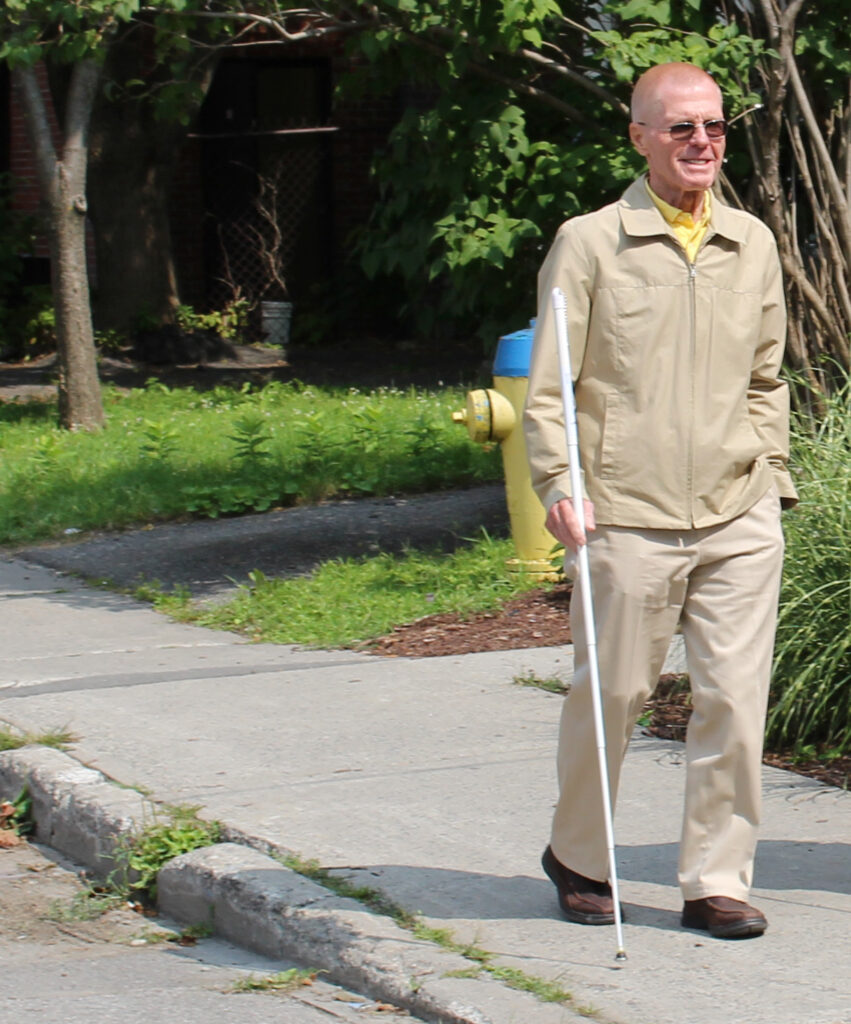

White Cane Week – Technology
Today, technology helps those who are blind/low vision to live full, independent lives.
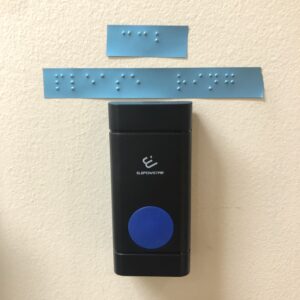
Low Tech
- Brightly-coloured and differently-textured bands that can be used to identify bottles and jars.
- Sock sorters for laundry. Clothespins for shoes and matching gloves
- Magnets, sticky dots and puff-paint to be used to make items more tactile
- Heavily-lined note pads, thick-tipped markers and large phone books, large-print and braille greeting cards. Braille and large-print playing cards and game pieces. Braille and large-print calendars. Braille paper and labels
- Tactile measuring cups/spoons, and other kitchen gadgets
- Perkins Braillers, slates and styluses, braille label makers
- Magnifiers and lighting
- Braille books and print/braille books
- Tethers used for running
- Monocular and binocular devices for distance viewing
- White canes
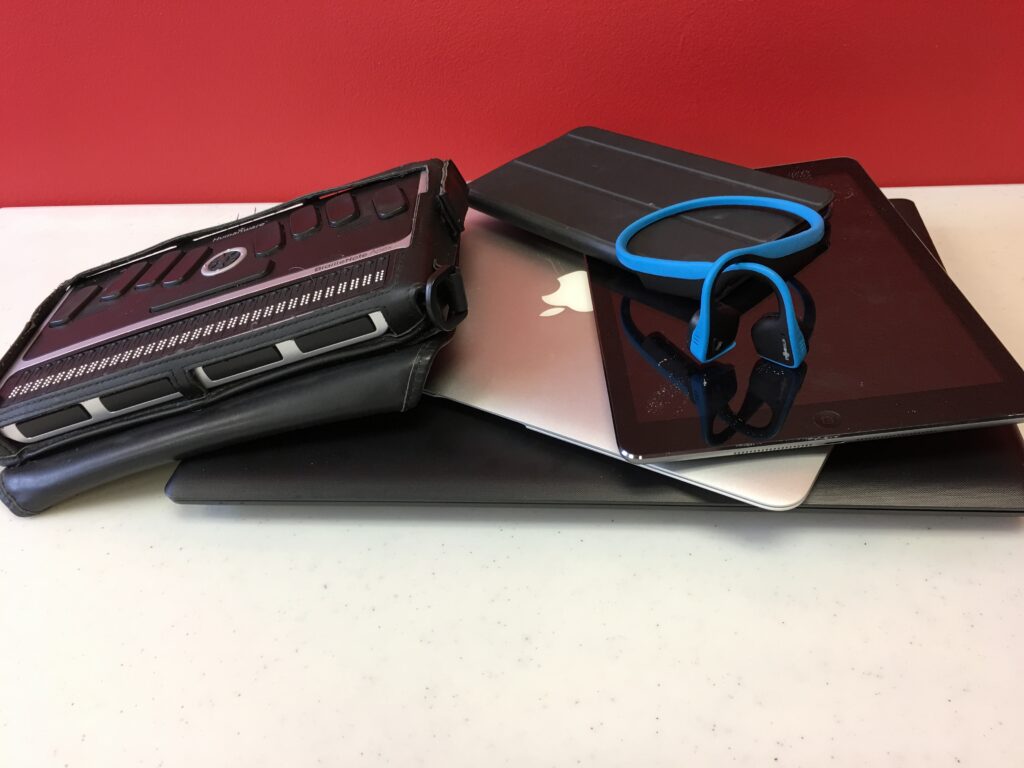
High Tech
- Screen-reading/magnification software on computers and phones
- Electronic Braille displays
- Sight-enhancement glasses such as occutech, ORCAM
- Sight substitution wearables such as EnVision glasses
- Services such as Aira and BeMyEyes
- Apps created for the blind-low/vision, print-disabled community, such as Blind Square, Voice Dream Reader/Writer/Scanner, Surround Sound, Be Specular
- Reading devices, such as Victor Streams, and wayfinding devices, such as Trekkers
- Audio-described TV services such as Rogers Ignite, AMI Audio/TV, descriptive soundtracks available at movie theaters
- Audio books
- Note takers for recording on a phone, a dedicated device.
- Location devices such as Way Around tags
- Medical devices such as ScripTalk and talking health monitoring devices and apps

White Cane Week – Blind Sports
Just like people with sight, those who are blind or have low vision participate in a variety of sports! This isn’t a full list of course. Do you participate in a sport not listed? Please comment on our social media posts to spread the word.
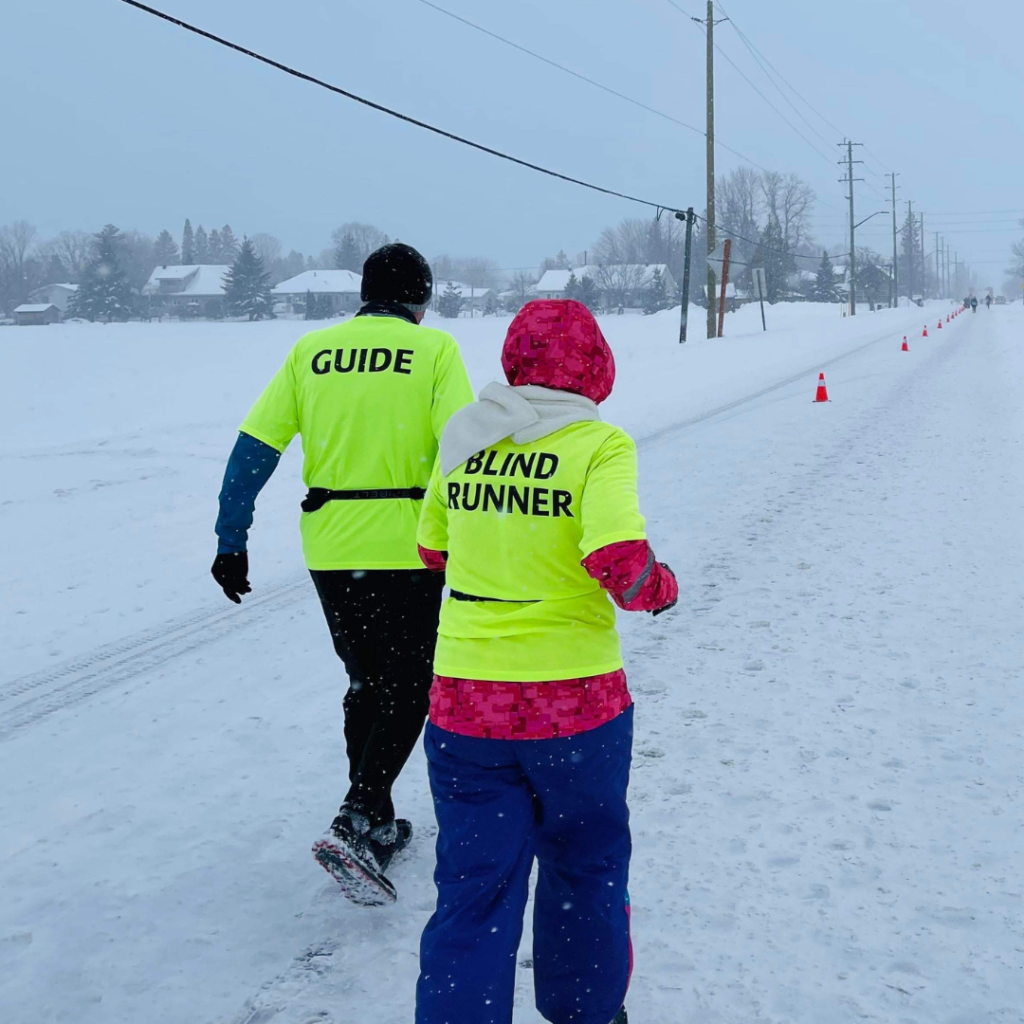
Fitness and individual sports
- Downhill and cross-country skiing and snowshoeing with the assistance of sighted guides
- Spinning: a group fitness class done on a stationary bike, led by an instructor who describes the cadence (speed) and amount of tension used during the class.
- Swimming: Swimming in pools within lanes with ‘tappers’ (people stationed at the ends of the pool) who tap the swimmer on the head to indicate the ends of the lane. Outdoor swimming with the help of buoys and tethered sighted guides.
- Running: on a treadmill, or with the assistance of a sighted guide—sometimes runner and guide use a tether to maintain contact.
- Triathlon: Swimming while tethered to a sighted guide, tandem biking and running while tethered.
- Group fitness classes where the exercises are described, called out and done in one place. This includes ‘aerobics,’ weights, yoga, Pilates and other classes that can be done in a group!
- Blind Golf
- Rock climbing
- Speed skating
- Wrestling
- Water skiing
- Horseback riding
Team Sports
- Hockey
- Soccer
- Curling
- Dragon boating
- Bowling
- Goalball
- Beep ball
- Darts

White Cane Week – Guide Dogs 101
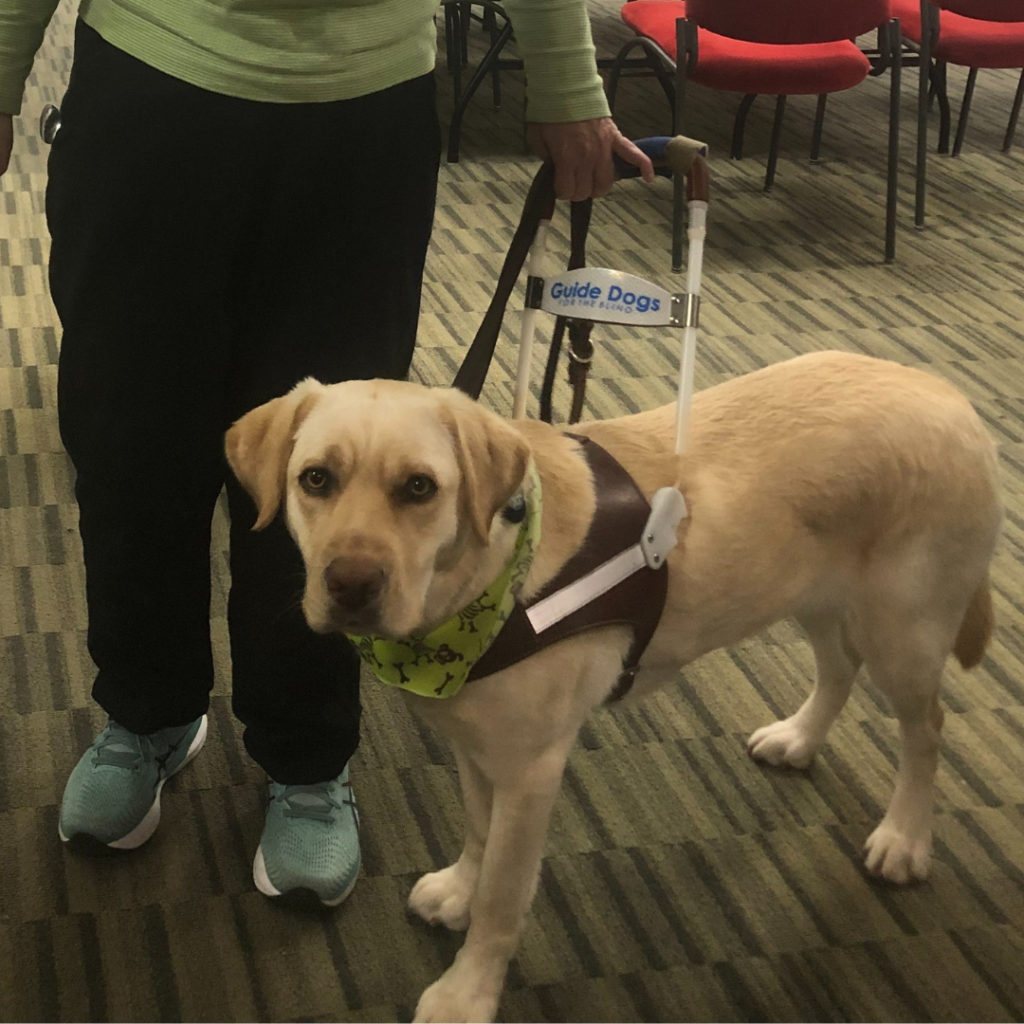
Guide dogs and their handlers navigate the world as a team. These loyal furry friends aren’t just cute, they make our lives easier and bring comfort to our hearts.
If you encounter a handler and their guide dog, please follow proper etiquette to ensure the safety of the guide dog team:
Harness on means hands off. A guide dog in harness means “I’m working.” Petting or talking to the dog can take the guide dog’s focus off its partner, and the potential for injury increases.
If the dog is not working, the guide dog handler may decide to remove the harness and let you pet the guide dog. Always ask the handler permission, before you pet the dog.
Don’t feed them. Offering food to the dog can lead to disruptive behaviours, like begging for food and scavenging off the ground.
If you’re walking your pet and approach a guide dog team, keep your dog away to avoid a distraction for the guide dog and possible harm to the guide dog user. When approaching a guide dog team with your dog, clearly notify the handler and say, “I’m passing on your left and I have a dog with me.”
There is time for play! Guide dogs don’t wear their harness at home, where they are not working, and get to be a “pet” dog. This is their time to play, run around, relax, and get lots of belly rubs!

White Cane Week – Interview from Peterborough Chapter
CCB Peterborough Chapter presents this very informative interview all about different white canes in honour of White Cane Week 2023. The video features Devon Wilkins and Leslie Yee.
You can watch the video on their webpage, here:
The video will play on their page.

White Cane Week – White Cane Etiquette
Here are some things to keep in mind when interacting with someone who is using a white cane.
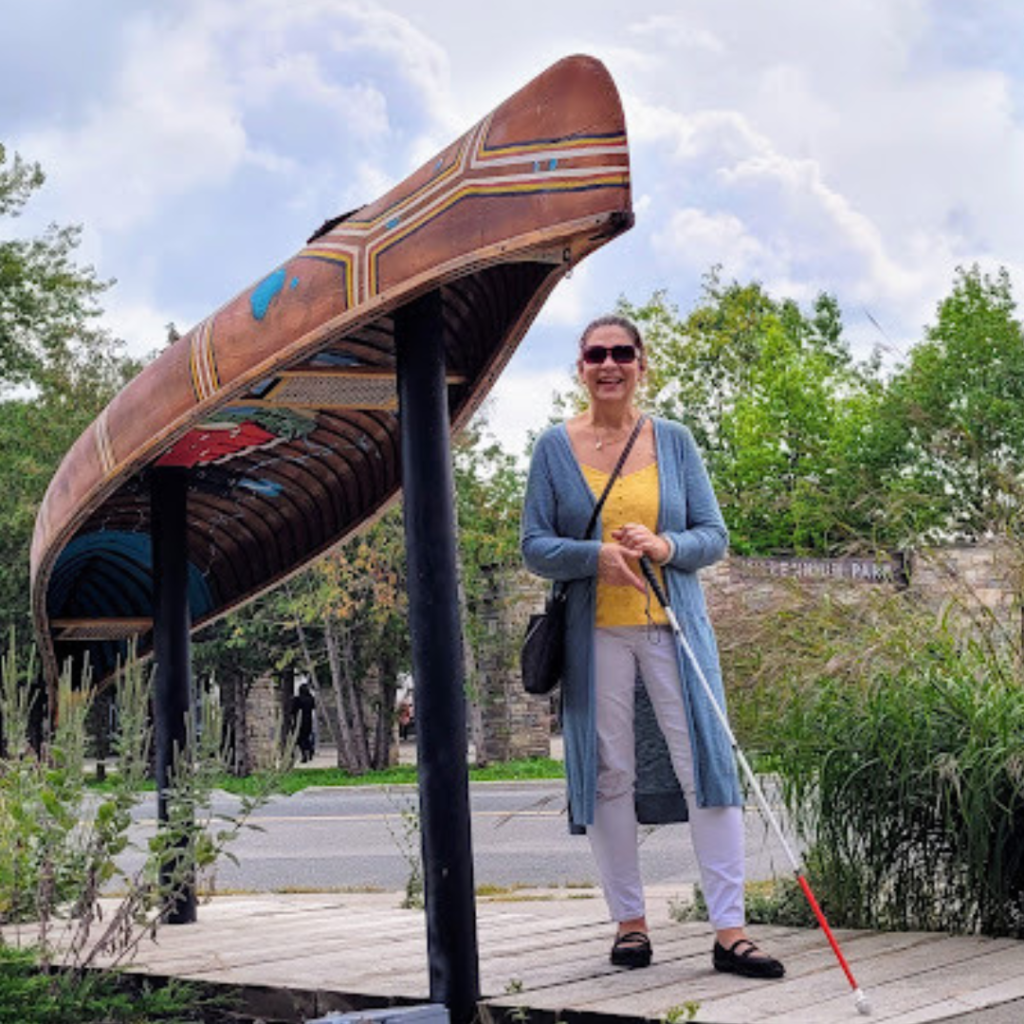
Many people can get around safely and independently with a white cane and do not need any assistance. If you would like to offer assistance to someone using a white cane:
1. Please ask if they need help.
2. Listen to how they respond.
3. Do not offer assistance if they do not need it
4. If they would like help, ask how you may be of assistance, and provide help according to what they say.
- Never grab a person’s white cane while they are using it. The cane helps keep its user safe and independent.
- The person using the white cane has no or low vision. Please do not assume they have other disabilities—there is no need to speak louder or slower.
- If you are giving directions to a person with a white cane, please do not say “Over there.” Be more specific, such as behind, in front, to your left, to your right, and respond to any questions they may have.
- Never move a white cane without asking its user for permission to do so—its owner needs to know where it is and will not be able to find it if it gets moved.
- Do not play with or use a white cane that does not belong to you. If it gets broken, its owner will be stranded.

White Cane Week – Types of White Canes
White Cane Types
Did you know that there are different kinds of white canes?
Identity Canes
These are used to identify their users with no or low vision. They are small and light, and can be folded up when not in use.
Guide Canes
Generally extend from the floor to the user’s waist, providing information about surroundings around a step ahead. It can be used to scan for curbs and steps. The guide can also be used diagonally across the body for protection, warning the user of obstacles immediately ahead. They too can be folded up when not in use.
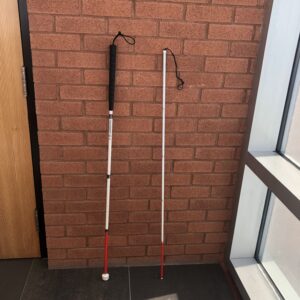
Mobility/Long Canes
Designed primarily as a mobility tool used to detect objects and provide information about the environment to the user about two steps ahead of them. The cane’s length depends on the user’s height, and traditionally extends from the floor to the user’s sternum. It differs from the guide cane in that a long cane’s end has a tip of some kind – either rolling or pointed.
Support Canes
These canes do not typically fold up. They help people with both vision and mobility issues by providing extra support for getting around
Fun Fact
White canes are typically all white, with a red section at the bottom, but some people have personalized their cane in different colours. The white cane with a red base is the most widely recognized worldwide.

